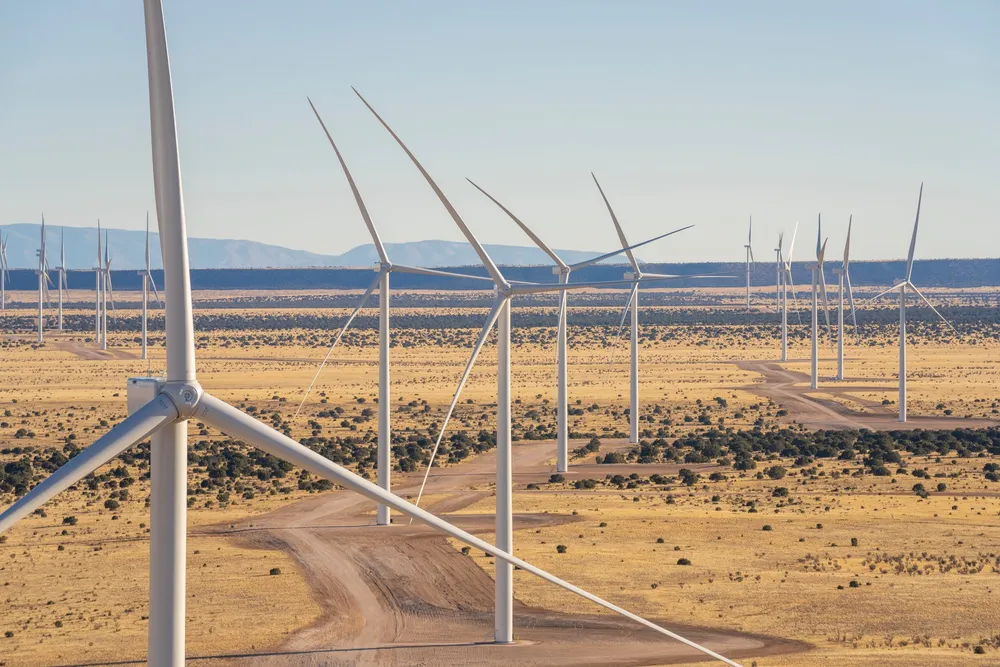Wind power buyers in dealmaking frenzy to lock in prices set to soar under Trump
Top PPA marketplace operator LevelTen says US tax credit reality is starting to sink in for buyer and seller alike

More stringent US tax credit rules have ignited a frenzy of transaction activity as buyers rush to secure PPAs with a finite pool of eligible onshore wind projects, and lock in prices before they could significantly increase.
“Buyers who act now hold a distinct advantage. The most competitive prices are moving into exclusivity within weeks, not quarters,” LevelTen Energy, the largest PPA marketplace operator, said in a recent report.
“It is impossible to overstate how quickly these assets are flying off the shelves – and once they’re gone, they’re gone,” it added, noting, “Buyers that move now can still access projects priced well below what’s expected in the quarters ahead.”
This is the “clearest signal yet that the market has already begun to reprice in light of these new risks and headwinds,” said LevelTen, whose report was released before Department of Treasury last Friday issued guidance that makes it more difficult for projects to qualify in time for tax credits.
When contracting wind power off-take, corporate and industrial buyers prefer virtual PPAs, which allow buyers to commit to green energy without taking physical delivery of electric power.
They are based on variable-priced cash flow and renewable energy certificates or credits (RECs). In the US, each REC is evidence that 1MWh of electricity was produced from an eligible facility.
The report’s dataset includes 201 unique virtual PPA offer price submissions from 135 operational and pre-operational projects in five major US power markets. The offers were submitted between 15 and 25 July.
LevelTen expects many of the PPA space’s most sophisticated, well-sourced buyers to contract with the bulk of future available tax credit-eligible wind capacity due to their ability to procure with speed, budget flexibility, and other factors.
These are led by technology companies such as Amazon, Google, Meta, and Microsoft, and utilities groups such as Berkshire Hathaway Energy, Pinnacle West Capital, Southern California Edison, and Xcel Energy. Other big buyers are AT&T and Walmart.
Less experienced and smaller buyers can succeed too, the report notes, “provided they enter the market with a clear vision of their goals and work efficiently with counterparties.
Corporate teams without stakeholder buy-in or streamlined procurement pathways are watching viable capacity slip away quickly, according to the report, which asserts in today’s market, “Hesitation isn’t cautionary, it’s a competitive disadvantage.”
Under construction
Projects coming online this year and likely next are those that were under construction by the end of 2024, having claimed legacy federal tax credits available in the 2022 Inflation Reduction Act (IRA).
Those are exempt from BBB rule changes and complex foreign entity of concern (FEOC) guidelines that take effect on 1 January 2026 and largely target China.
On 31 December 2024, the US had 15.9GW of land-based wind project capacity under construction, according to American Clean Power Association (ACP), a national trade group. It defines this as a construction team having begun work on the ground at the project site.
If accurate and with 1.3GW installed in first quarter 2025, that left 14.6GW under construction on 1 April, assuming all projects continued to advance. If similar capacity came online in the second quarter, that would leave 13.3GW being built under IRA guidelines, less than the US installed in 2021, the last “boom year” for onshore wind.
That level of capacity will fill a tiny sliver of future US clean energy demand. In 2024, a record 42.6GW of PPAs were executed or announced with another 12GW or so of other deals done using other mechanisms.
Advanced development
What about projects in advanced development? ACP defines those as having a PPA, a firm equipment order, or advancing with plans to be placed under utility ownership as of the end of the most recent quarter.
At the start of 2025, 9.3GW of capacity were in this category. How many of those projects have qualified for new technology-neutral tax credits that took effect at that time, or could become eligible, is unclear.
Republicans’ partisan BBB created a 12-month transition period through 4 July 2026 based on when a project begins construction. If met, it would have four years to start operation and claim tax credits. Beyond that deadline through the balance of 2026, it must come online by 31 December 2027 to benefit from them.
Treasury on Friday moved the goal posts by ending the 5% spend of total project capex test for construction start tax credit eligibility in effect since 2013. Wind and utility-scale solar developers have a scant 17-day window to qualify a project under this rule before it goes away on 2 September.
What remains is the test for “physical work of a significant nature” either onsite or offsite, which many developers have relied on in varying degrees, and the market was able to function.
Still, such physical work onsite will now need to have been “performed” as opposed to “begun.” This leaves uncertainty about how much work is required.
“The financiers will have to decide where they feel comfortable drawing lines,” law firm Norton Rose Fulbright said in a note to clients.
Physical work offsite to satisfy tax credit eligibility includes excavation of turbine foundations, installation of anchor bolts, or pouring of concrete pads.
“Developers are urgently reprioritising pipelines based on tax credit eligibility, FEOC exposure, and their ability to hit new timelines,” the report said.
That sounds reassuring, but potential buyers of wind energy are aware that not all projects, however good they look on paper, will make it across the finish line even if eligible for a tax credit.
The reasons include equipment shortages, long interconnection queue waits, permitting delays, soaring supply chain costs, and transmission congestion. Solutions for any of those challenges are far on the horizon.
(Copyright)